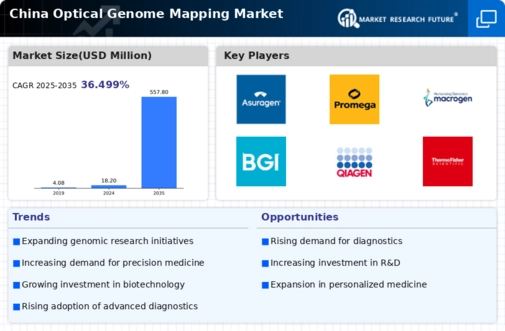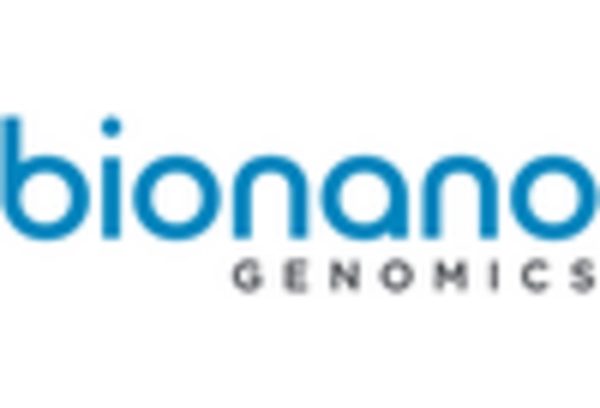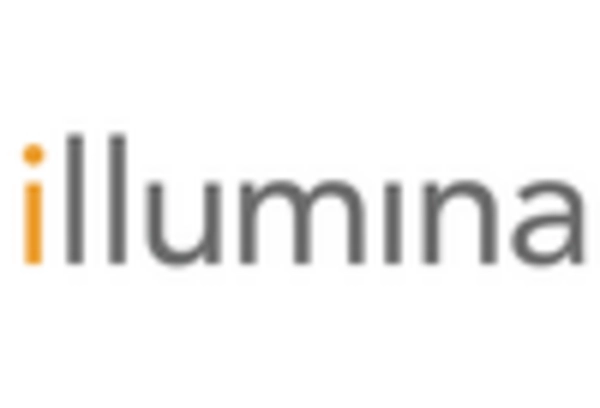The optical genome-mapping market is currently characterized by a dynamic competitive landscape, driven by advancements in genomic technologies and increasing demand for precision medicine. Key players such as Bionano Genomics (US), Illumina (US), and Thermo Fisher Scientific (US) are at the forefront, each adopting distinct strategies to enhance their market presence. Bionano Genomics (US) focuses on innovation in optical genome mapping technology, aiming to provide comprehensive genomic insights that facilitate research and clinical applications. Illumina (US), on the other hand, emphasizes partnerships and collaborations to expand its product offerings and enhance its technological capabilities, while Thermo Fisher Scientific (US) is leveraging its extensive distribution network to penetrate emerging markets, thereby shaping the competitive environment through strategic positioning and operational focus.
In terms of business tactics, companies are increasingly localizing manufacturing and optimizing supply chains to enhance efficiency and reduce costs. The market appears moderately fragmented, with several players vying for market share. However, the collective influence of major companies is significant, as they drive innovation and set industry standards, thereby shaping the overall market structure.
In October 2025, Bionano Genomics (US) announced a strategic partnership with a leading Chinese research institution to enhance its optical genome mapping capabilities. This collaboration is expected to facilitate the development of advanced genomic solutions tailored to the specific needs of the Chinese market, thereby reinforcing Bionano's position as a leader in genomic technologies. The strategic importance of this partnership lies in its potential to accelerate research and development efforts, ultimately leading to improved patient outcomes.
In September 2025, Illumina (US) launched a new optical genome mapping platform designed to integrate seamlessly with its existing sequencing technologies. This launch is indicative of Illumina's commitment to innovation and its strategy to provide comprehensive genomic solutions. By enhancing its product portfolio, Illumina aims to solidify its market leadership and cater to the growing demand for integrated genomic analysis tools.
In August 2025, Thermo Fisher Scientific (US) expanded its manufacturing capabilities in China, investing approximately $50 million in a new facility dedicated to optical genome mapping technologies. This expansion is strategically significant as it not only increases production capacity but also enhances the company's ability to respond to local market demands swiftly. Such investments reflect a broader trend of companies seeking to optimize their supply chains and improve operational efficiency in response to evolving market conditions.
As of November 2025, current trends in the optical genome-mapping market include a strong emphasis on digitalization, sustainability, and the integration of artificial intelligence (AI) into genomic technologies. Strategic alliances are increasingly shaping the competitive landscape, enabling companies to pool resources and expertise to drive innovation. Looking ahead, it is anticipated that competitive differentiation will evolve, with a shift from price-based competition to a focus on innovation, technological advancements, and supply chain reliability. This evolution underscores the importance of adaptability and forward-thinking strategies in maintaining a competitive edge in the rapidly changing market.

















Leave a Comment